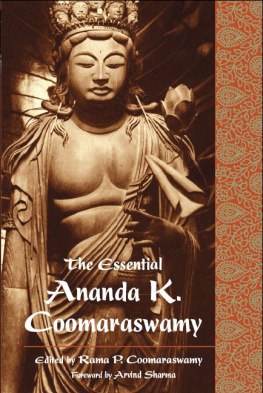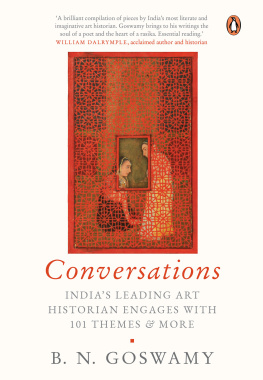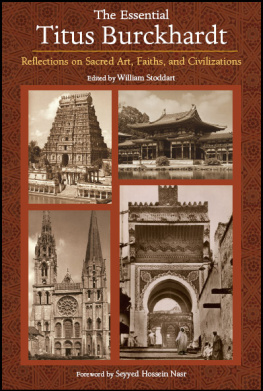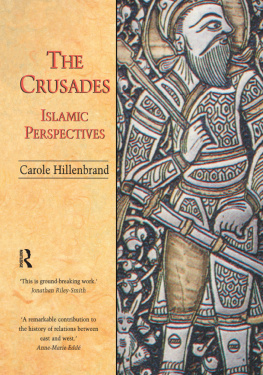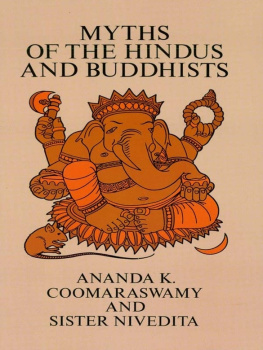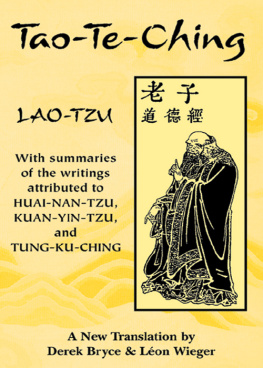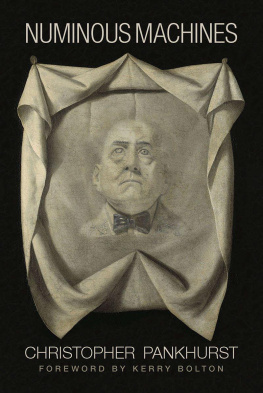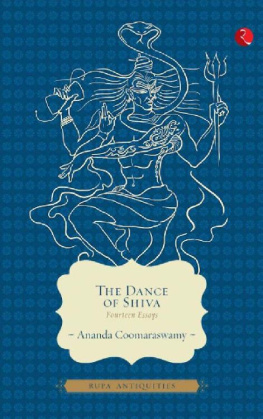No attempt has been made to achieve total stylistic consistency in the citation of the most frequently referenced works by Ananda K. Coomaraswamy. References may be cited in full or in abbreviated form (e.g. Rig Veda, or RV).
About this Book
Ananda K. Coomaraswamy is in the very first rank of exceptional men, such as Ren Gunon and Frithjof Schuon, who in our dark age have permitted us to rediscover the great truths of sacred Tradition, to relearn what a civilization, a society, and a world are that conform to this Tradition ... The masterful work of Ananda K. Coomaraswamy is one of the most suitable to enlighten the minds and hearts of men of good will.
Jean Hani , author
This anthology is comprised of essays on a variety of subjects, from art and literature through philosophy to myth, religion and metaphysics, setting forth, not simply the informed opinions of its author, but indeed the timeless and inspired wisdom of mankind. Given the immensity of Ananda K. Coomaraswamys literary output, the present compilation constitutes a welcome and much-needed contribution to the perennialist literature.
Wolfgang Smith , scientist and mathematician, author of Cosmos and Transcendence: Breaking Through the Barrier of Scientistic Belief
This book is important to anyone who intends to grasp the roots of culture both in the East and in the West and how they inter-relate in their intellectually vital aspects. Exemplary and flawless use of language makes this book an inspiring evaluation and contemplation of the meaning of culture in both its Oriental and Western manifestations.
Frederick Franck , artist and author of The Zen of Seeing and Messenger of the Heart: The Book of Angelus Silesius
Coomaraswamys work is as important as that of Joseph Campbell or Carl Jung, and deserving of the same attention. The Essential Ananda K. Coomaraswamy is a good way to approach his extensive writings that explore in depth and in detail the essence of culture and spirituality both East and West, both ancient and modern.
David Frawley, author of Yoga and Ayurveda and From the River of Heaven: Hindu and Vedic Knowledge for the Modern Age
Like St. Augustine, Ananda K. Coomaraswamy wrote in order to perfect his own understanding. He sought to know the whatness and principial roots of things, above all of himself. In doing so, he collaterally provided access to a fundamental intellectual itinerary which unfailingly beckons all who recognize in themselves an intrinsic regard for Truth. This itinerary is eloquently epitomized in the twenty essays of this book, essays as delightful as they are perennial.
Alvin Moore, Jr., co-editor of Selected Letters of Ananda Coomaraswamy
After having read Ananda K. Coomaraswamy, the distinction between Oriental and Occidental thought hardly has any more meaning. He is a tireless ferryman between one and the other side of the same transcendent [reality].
Jean Canteins, author
The pioneering and interdisciplinary essays of Ananda K. Coomaraswamy on medieval Christian and Oriental art have shed so much light on religious symbolism and iconography, and given such profound metaphysical insight into the study of aesthetics and traditional folklore, that if contemporary art history does not take [his] challenges and contributions into account, it will inevitably fall prey to ideological reductionisms and degrade the ancient and perennial language of art forms into a mere archaic system of lifeless symbols with [no] meaning.
Ramon Mujica Pinilla, art historian, Universidad Mayor de San Marcos, Lima, Peru
Coomaraswamys essays [give] us a view of his scholarship and brilliant insight.
Joseph Campbell , author of The Hero with a Thousand Faces and The Masks of God
In Coomaraswamy ... all the religious traditions of the world meet.
Jean Borella , author of The Secret of the Christian Way and The Sense of the Supernatural
Bibliographical References*
Marco Pallis, Prologue: A Fateful Meeting of Minds: A. K. Coomaraswamy and R. Gunon: Dilip , Vol. V, No. 1 (n.d.); and Studies in Comparative Religion , Vol. 12, Nos. 3, 4 (1978).
- A Figure of Speech or a Figure of Thought?: Ananda K. Coomaraswamy, Figures of Speech or Figures of Thought: Collected Essays on the Traditional or Normal View of Art (London: Luzac, 1946); Coomaraswamy 1: Selected Papers, Traditional Art and Symbolism , edited by Roger Lipsey (Princeton: Bollingen Series, Princeton University, 1977); and The Door in the Sky: Coomaraswamy on Myth and Meaning , edited by Rama P. Coomaraswamy (Princeton: Bollingen Series, Princeton University, 1997).
- The Bugbear of Literacy: Asia Magazine , New York (February 1944); Ananda K. Coomaraswamy, Am I My Brothers Keeper? (New York: John Day, 1947; London: Dennis Dobson, 1947); and Ananda K. Coomaraswamy, The Bugbear of Literacy (London: Perennial Books, 1979).
- On the Pertinence of Philosophy: Ananda K. Coomaraswamy, What is Civilization? And Other Essays (Ipswich: Golgonooza Press, 1989).
- Eastern Wisdom and Western Knowledge: Isis , Vol. XXIV, Cambridge, Massachusetts (1943); Am I My Brothers Keeper? ; and The Bugbear of Literacy .
- Beauty and Truth: Art Bulletin , Vol. XX, New York (1938); Ananda K. Coomaraswamy, Why Exhibit Works of Art? (London: Luzac, 1943); and Ananda K. Coomaraswamy, Christian and Oriental Philosophy of Art (New York: Dover, 1956).
- The Interpretation of Symbols: What is Civilization? And Other Essays .
- Why Exhibit Works of Art?: Journal of Aesthetics , New York, Fall Issue (1941); Why Exhibit Works of Art? ; and Christian and Oriental Philosophy of Art . Originally an address delivered before the American Association of Museums at Columbus, Ohio, and Newport, R.I., in May and October, 1941.
- The Christian and Oriental, or True, Philosophy of Art: Why Exhibit Works of Art? ; and Christian and Oriental Philosophy of Art . Originally a lecture delivered at the Walter Vincent Smith Art Gallery, and at Boston College, 1939, and printed as a John Stevens Pamphlet , Newport, 1939.
- Is Art a Superstition, or a Way of Life?: Why Exhibit Works of Art? ; Christian and Oriental Philosophy of Art ; and as Art, Man and Manufacture, in Our Emergent Civilization , edited by Ruth Nanda Anshen (New York: Harper and Brothers, 1947). Originally a lecture given at the Metropolitan Museum of Art, New York, April, 1937, and at Harvard University (Summer School), July, 1937. Printed in the American Review , Summer Number (1937), and as a John Stevens Pamphlet , Newport, 1937. Postscript: Note on a Review by Richard Florsheim of Is Art a Superstition, or a Way of Life?: Art Bulletin , Vol. XX, New York (1937); Why Exhibit Works of Art? ; and Christian and Oriental Philosophy of Art .
- The Nature of Medieval Art: Arts of the Middle Ages , Museum of Fine Arts, Boston (1940); Why Exhibit Works of Art? ; and Christian and Oriental Philosophy of Art .
- Ars sine scientia nihil : The Catholic Art Quarterly , Vol. VI (1943); Figures of Speech or Figures of Thought ; and Coomaraswamy 1: Selected Papers .

